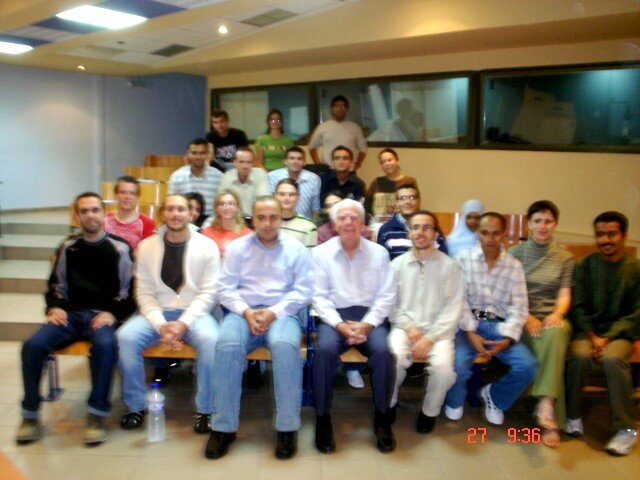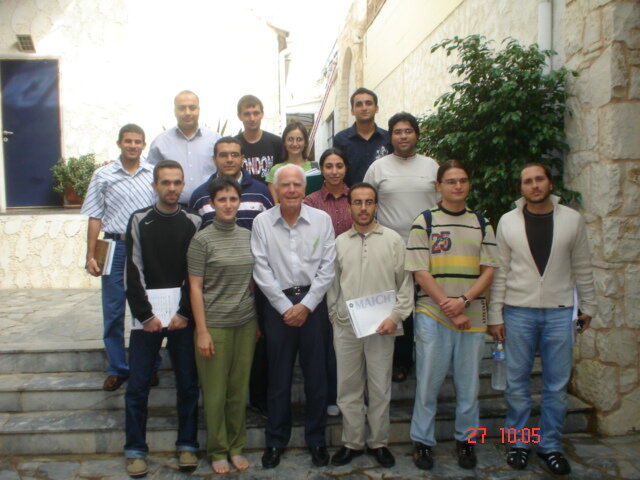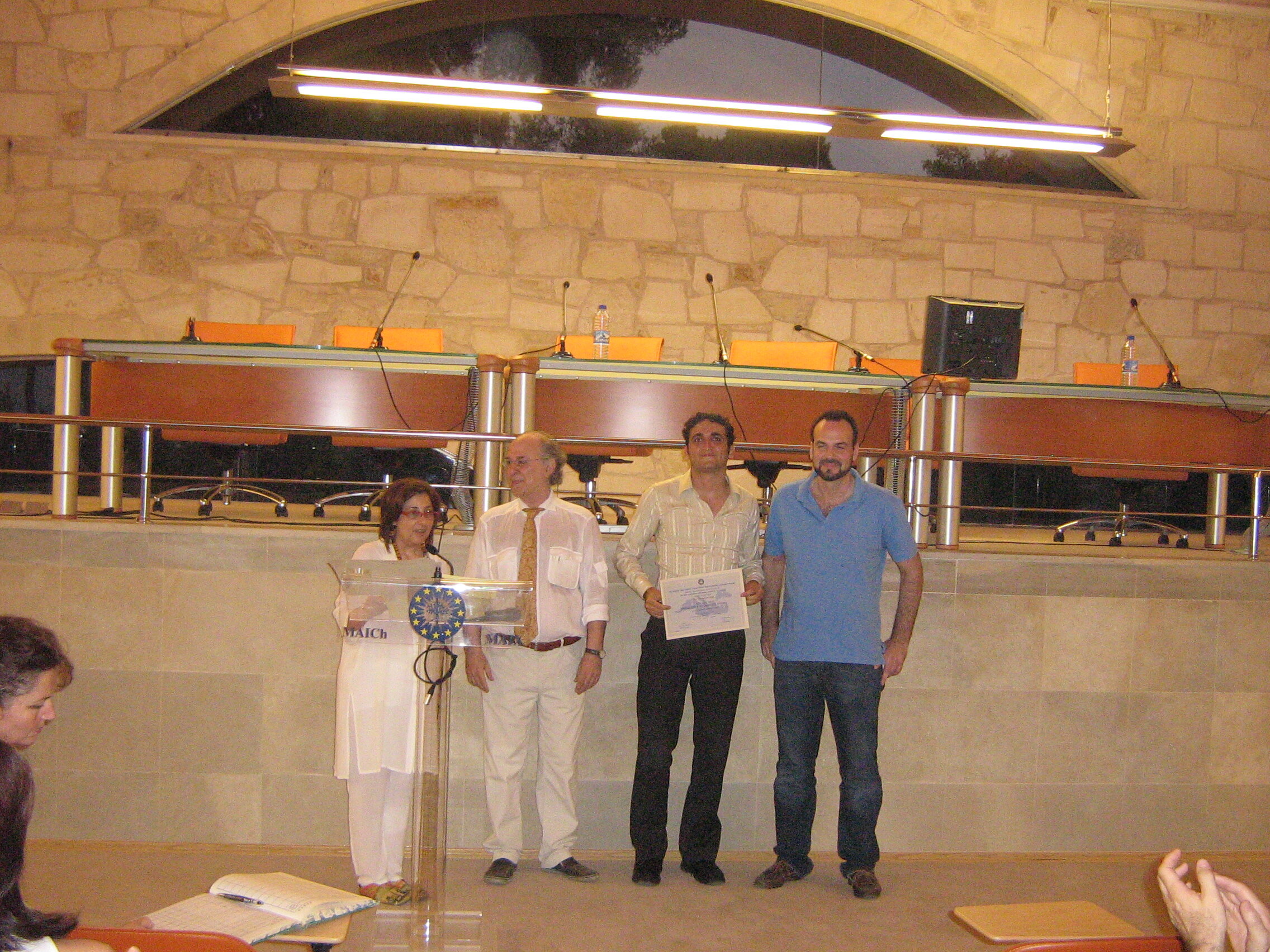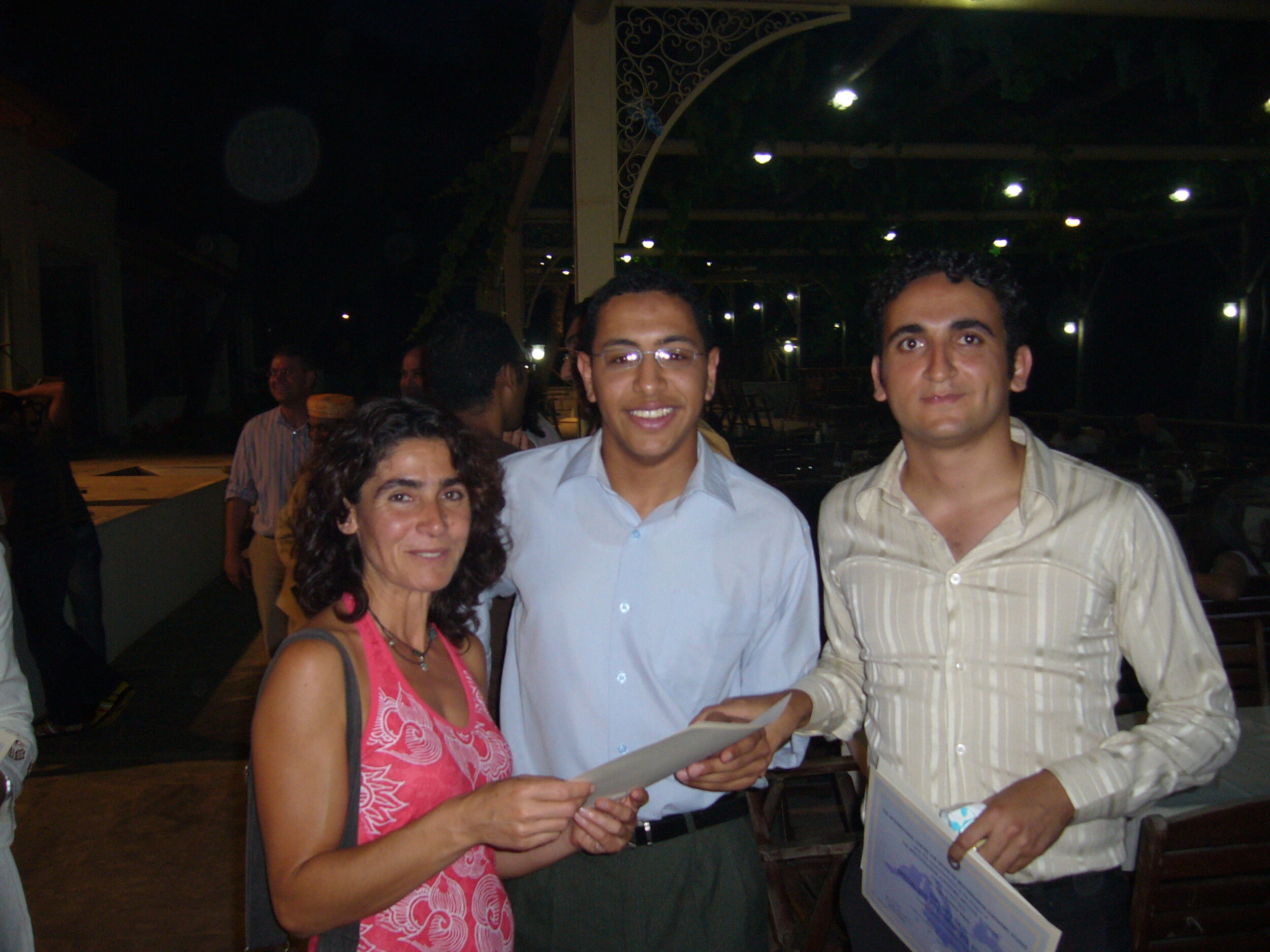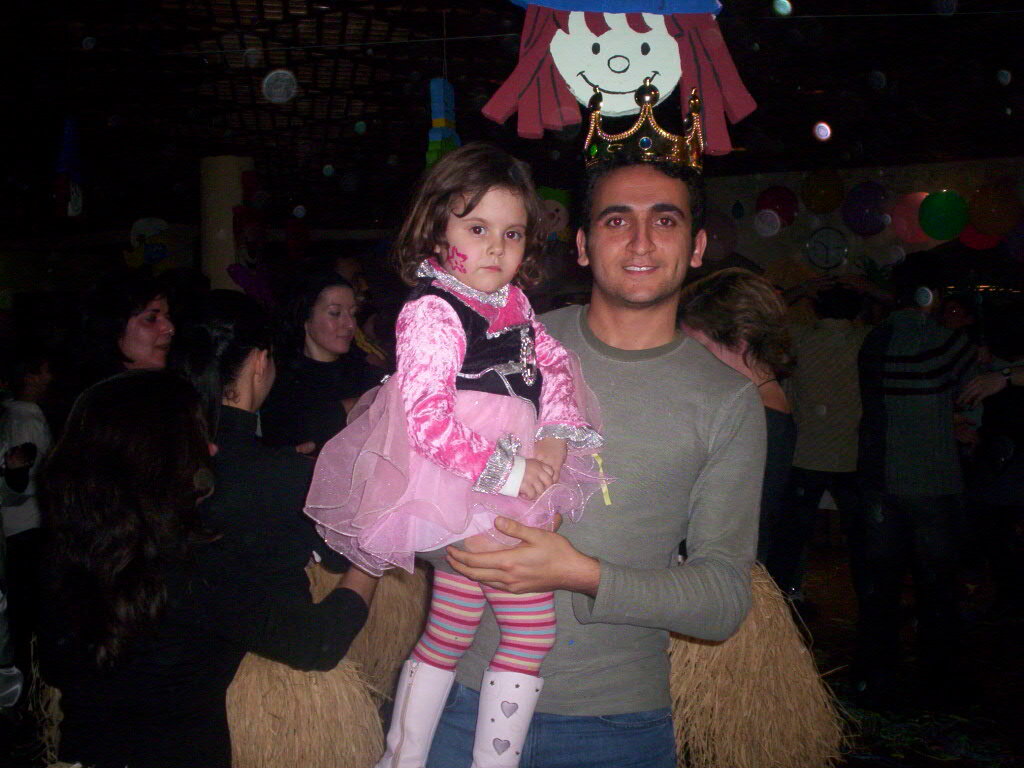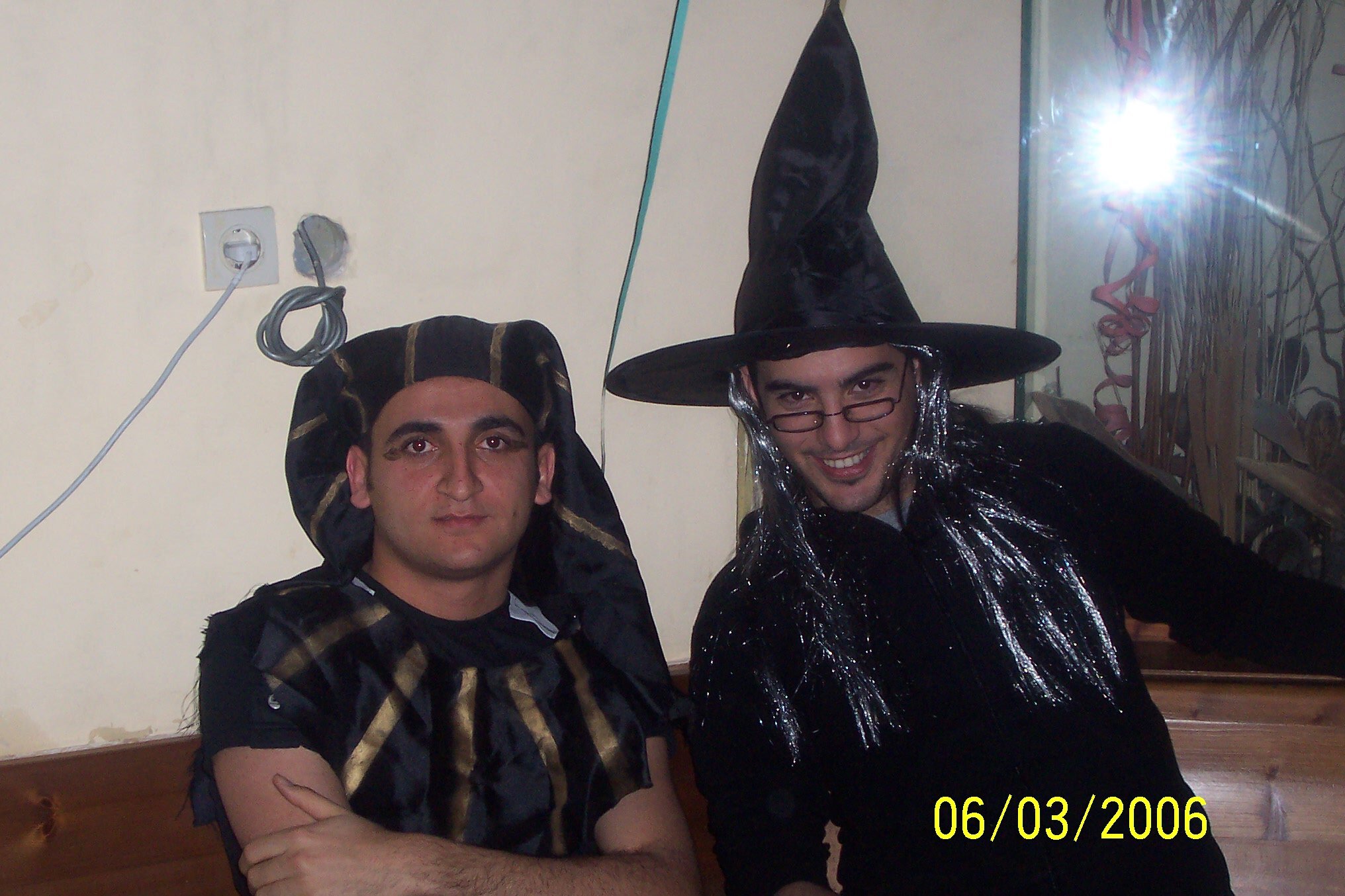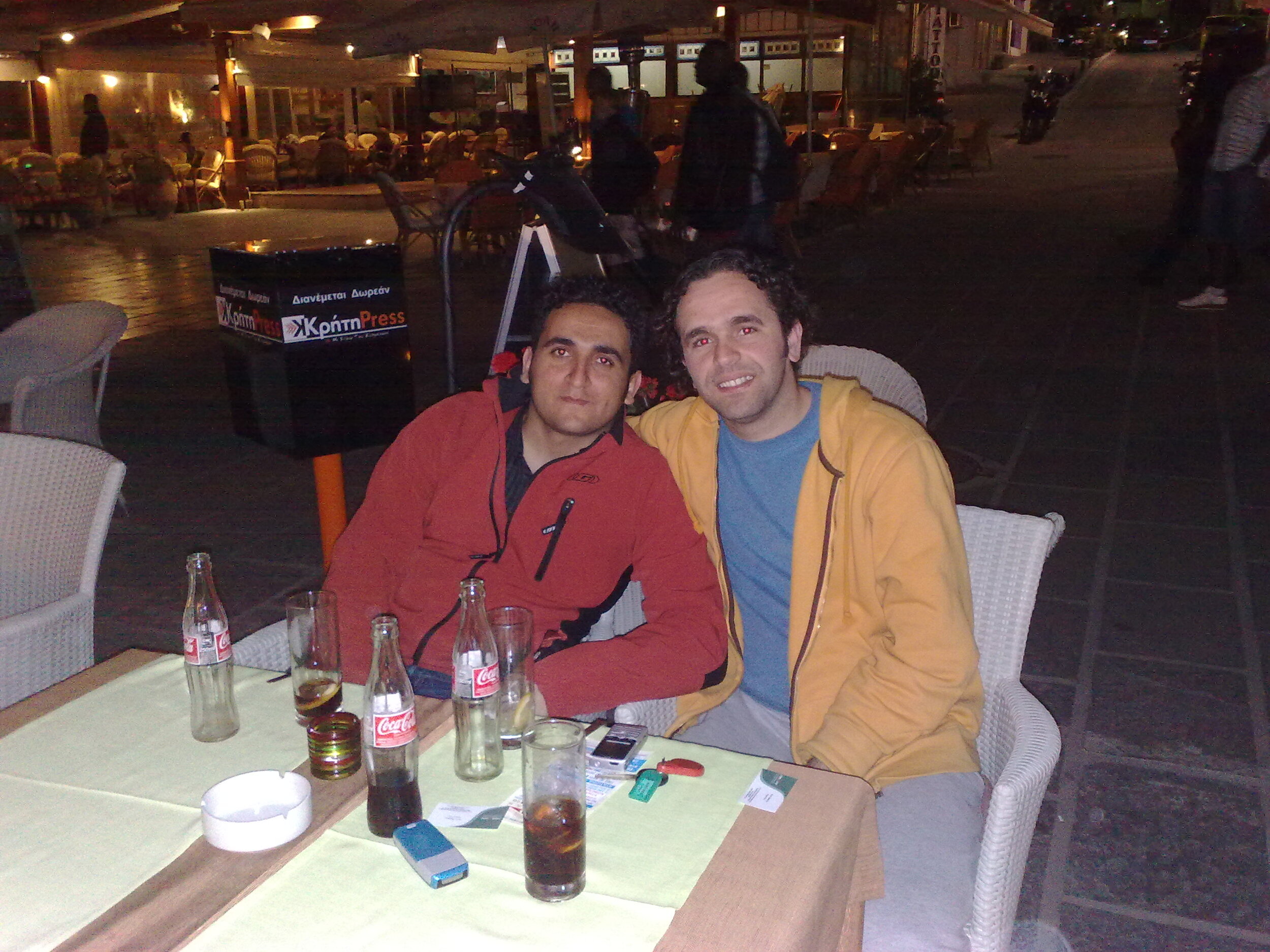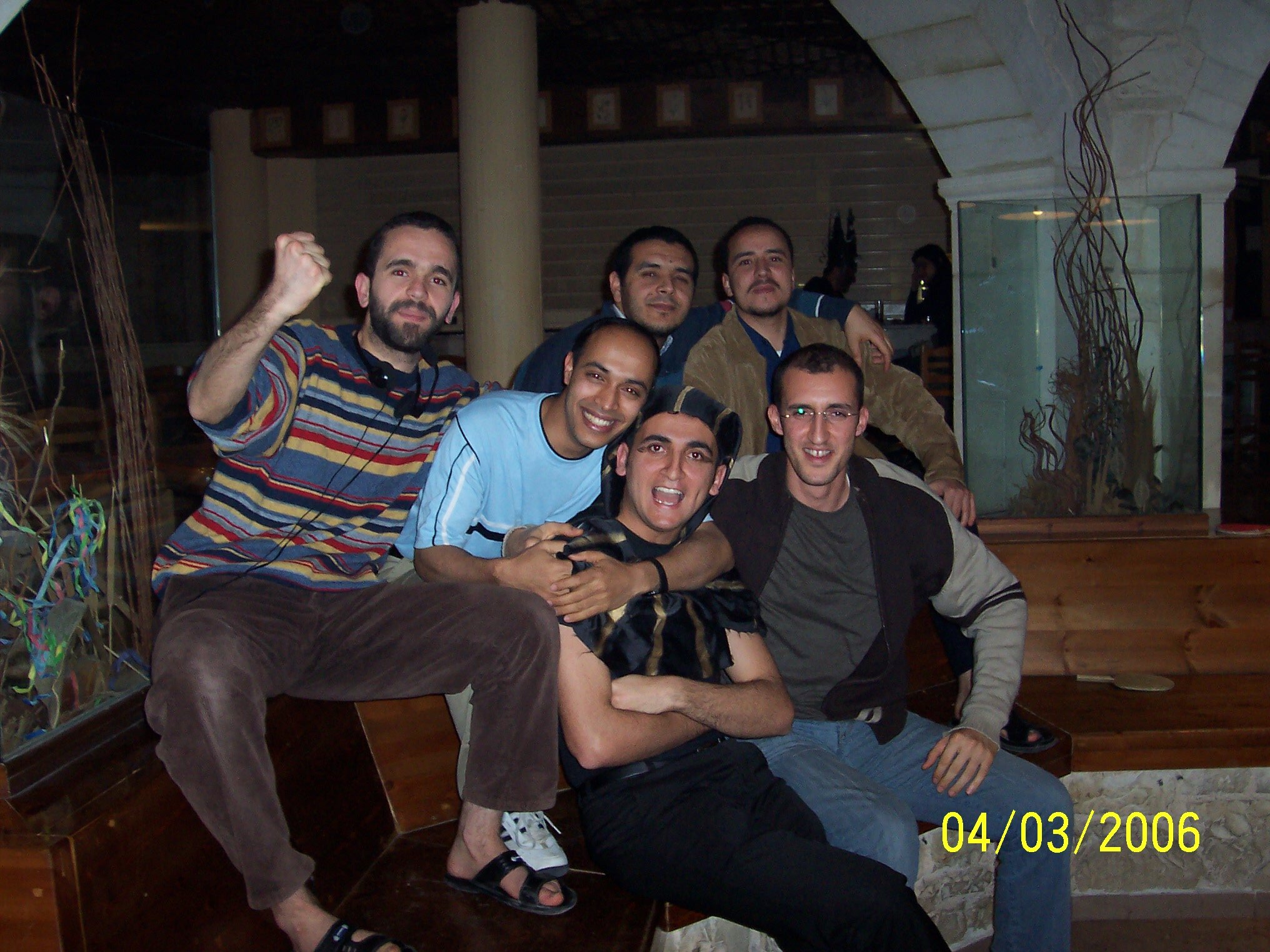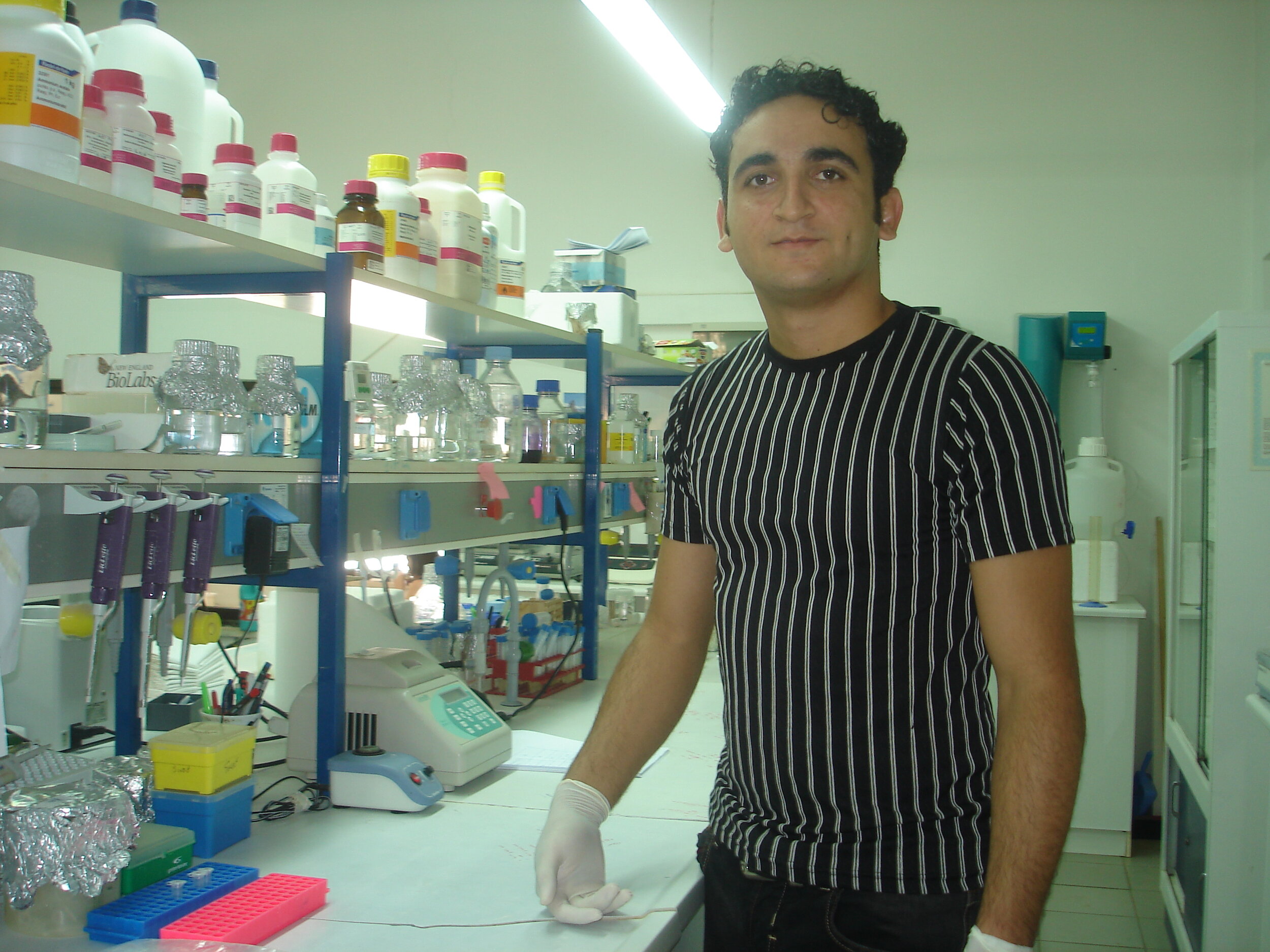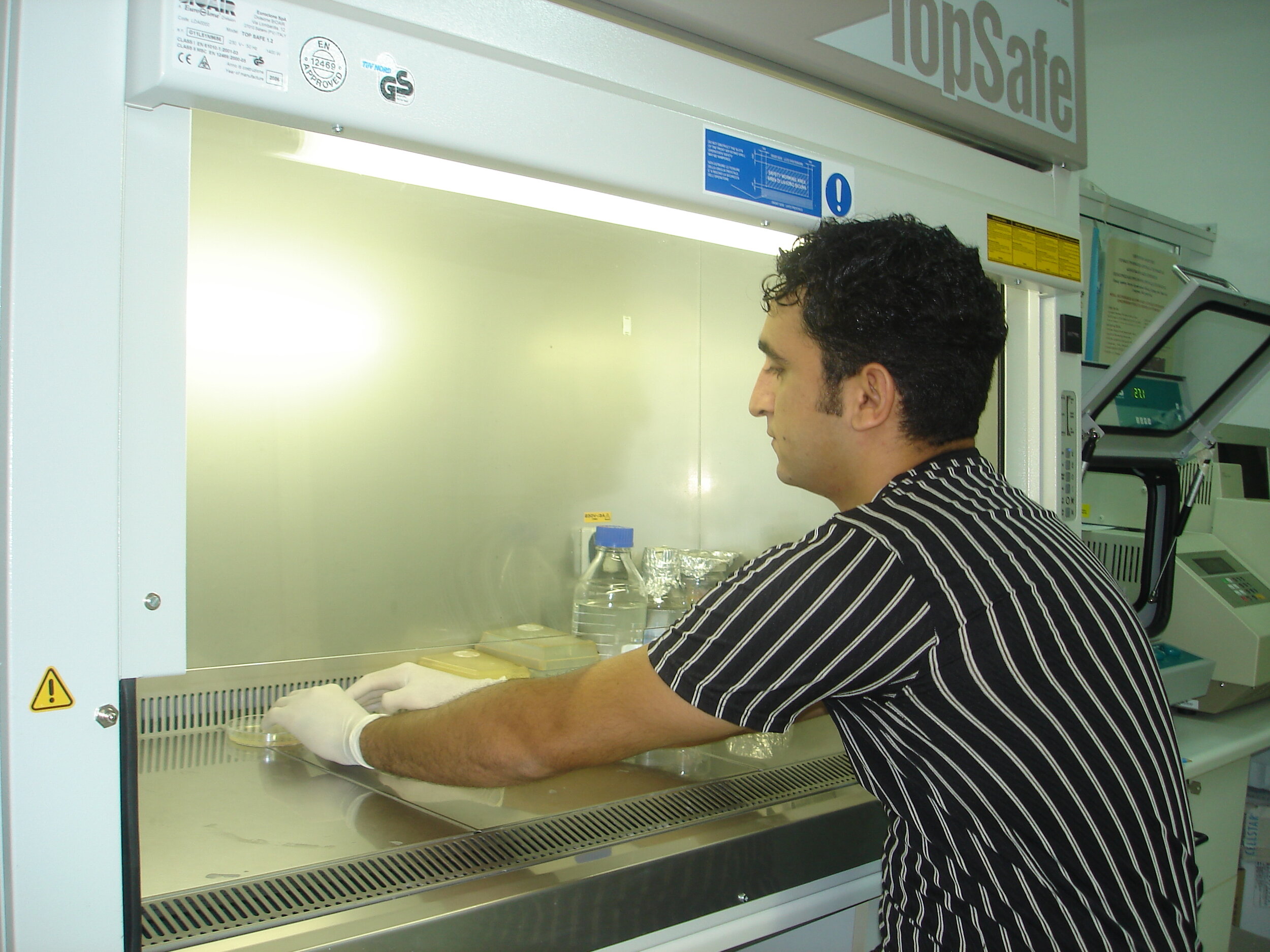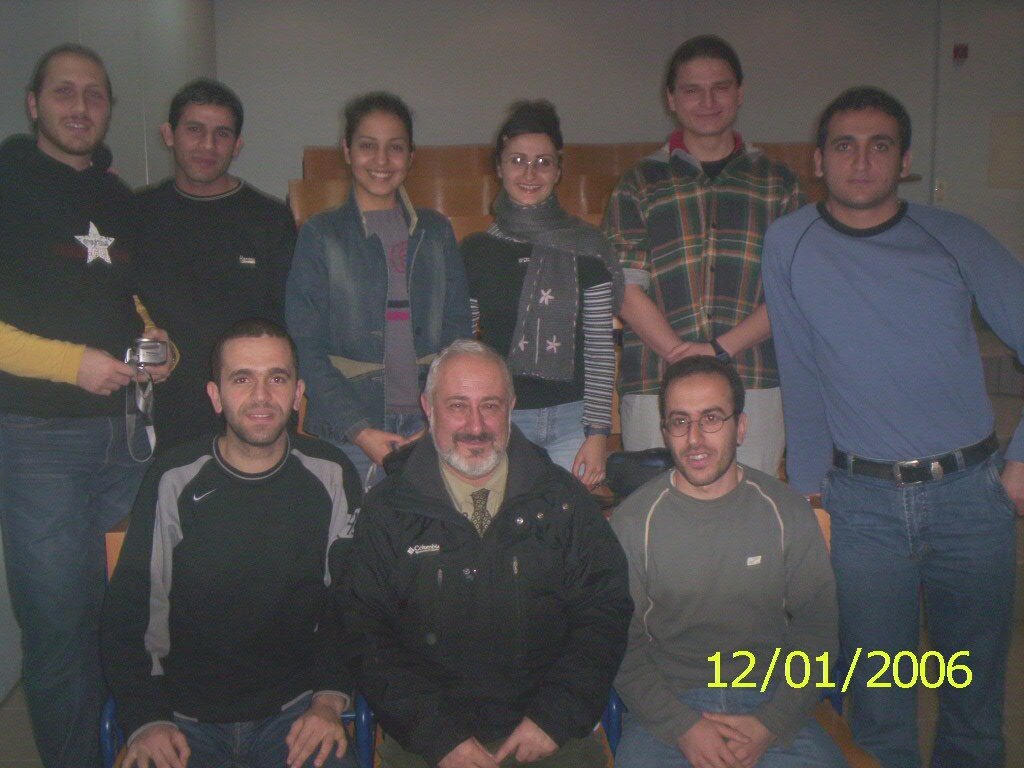In the group of Prof. Dr. Ioannis Livieratos (Maich-Chania, Crete, Greece)
Nucleotide sequence analysis and detection of a Greek isolate of Tomato chlorosis virus
Tomato chlorosis virus (ToCV) is a whitefly-transmitted crinivirus with a bipartite RNA genome inducing yellowing diseases in greenhouse and outdoor tomato plants. In this study, both genomic RNA components of a Greek isolate (Gr-535) of ToCV were sequenced. They contained 8594 nucleotides (nt) and 8242 nt and shared 97% and 99% sequence identity with Spanish and American isolates, respectively. Phylogenetic analysis and pairwise nucleotide and amino acid sequence comparisons showed that the Greek isolate clustered together with the American ToCV isolate. Nevertheless, the Greek and Spanish isolates shared several common deletions and extra stretches of nucleotides in the untranslated regions of their genomes when compared to the American isolate, suggesting genetic recombination. Prediction of putative structures of the 3’-terminus of ToCV RNA 1 showed the presence of four stem loops and a pseudo-knot, while the putative structure of the 3’-terminus of ToCV RNA 2 varied between the three sequenced isolates. Diagnostic dot-blot hybridization and reverse transcription–polymerase chain reaction (RT-PCR) assays indicated that ToCV could easily be detected in 20 ng of total RNA extracts from infected plants. Dot-blot hybridization could also be performed for virus diagnosis using infected crude plant extracts.
A.R.A. Kataya, E. Stavridou, K. Farhan and I. Livieratos (2008). Nucleotide sequence analysis and detection of a Greek isolate of Tomato chlorosis virus. Plant pathology 57, 819?824.

